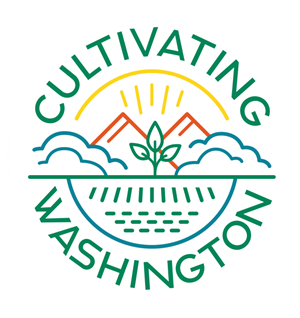Wine grapes were one of the first cultivated fruits grown in the Pacific Northwest. Now wines made from Washington-grown grapes are among the best in the world. There are more than 750 wineries in Washington, and the wine industry contributes more than three billion dollars to the state's annual economy. (This essay was written for students in third and fourth grade who are studying Washington State History and for all beginning readers who want to learn more about Washington. It is one of a set of essays called HistoryLink Elementary, all based on existing HistoryLink essays.)
From Dried-up Seeds
The earliest recorded grapevines in what was to become the state of Washington were planted at Fort Vancouver. This new trading post was built in 1825 by the British Hudson's Bay Company. Manager Dr. John McLoughlin selected the site on the north bank of the Columbia River because the soil was fertile and the ground was flat. He thought it would be a good place to develop a farm, to grow food for people at the fort.
Among the first fruits planted there were grapes and apples. It was all pretty much by accident. The head of the Hudson's Bay Company, George Simpson, had placed seeds from grapes and apples in his vest pocket while attending a party in London, England. He discovered them a few months later while visiting Fort Vancouver. He gave the dried-up seeds to McLoughlin, who planted them to see if they would still grow. And they did!
Some of the settlers who traveled the Oregon Trail in their covered wagons carried grape cuttings to start vineyards for their homesteads. Henderson Luelling babied his cuttings all the way from Iowa to the Willamette Valley in Oregon. He started a nursery there and shared cuttings with others who wanted to try to grow grapes on their own land. There were others in the Puget Sound region who also started nurseries to grow grapes and apples and share with other immigrants.
In 1869, the Charles Schanno family planted the first known grapevines in the Yakima Valley on their farm near Union Gap, probably using plantings from the vineyard at Fort Vancouver. While preparing to move from Oregon, where the family had founded the first brewery in The Dalles, to the Yakima Valley, Schanno carefully wrapped his grapevines in wet straw to make sure they did not dry out. He carried the precious grapevine cuttings by hand. When he arrived, he placed them in a warm spring on his property to prepare them for a successful planting. Within a few years, Anthony Herke planted a vineyard on a nearby homestead. It is believed that he got his "starter" vines from his neighbor Charles Schanno.
Early vineyards in Washington were not considered businesses. Farmers used the grapes to make wine for their own use, then traded, sold, or gave their excess to friends and family. Over the next forty years, many individuals experimented with growing different types of grapes, some with seeds imported from France. In 1883, a 20-degree-below-zero freeze wiped out many of the local vineyards.
But the Yakima Valley's soil and climate provided a great place for grapes to thrive -- even after the big freeze. Although the valley was very dry, the Yakima River provided the irrigation needed to water the vineyards. In 1905, the U.S. Bureau of Reclamation began a series of new irrigation projects that encouraged more people to move to the area to try their hand at planting grapes. By then, many different types of wine were being produced due to the greater variety of grapes planted in the valley.
A law passed by Washington voters that made it illegal to sell alcohol in the state took effect in 1916. This was called "prohibition" because the law prohibited -- or banned -- the sale of alcohol. The law allowed individuals to make small amounts of their own homemade wine, so many of the early wine-makers still continued to grow grapes and produce wine.
It was not until 1933 that Washington became the 24th state to vote for the repeal of (doing away with) prohibition. Shortly after that companies began to file papers with the government to establish commercial wineries. They were "bonded" or licensed by the state. By 1938, there were 42 such wineries in the state.
Washington's wine producers formed a club to help each other in 1935. They called themselves the Washington Wine Producers Association. In 1938, they changed the name to the Washington Wine Council. They hired experts to help improve the quality of wines produced in this state. One of them was a horticulturist named Walter J. Clore. He worked at the Agriculture Research Extension Center near the town of Prosser in the Yakima Valley. He helped winemakers find better kinds of grapes to plant. One result was that winemakers began producing more varieties of wine in the valley. Many of those wines have caught the attention of wine-lovers all over the world because of their flavor and quality. Some have won important awards such as "best in the country" or scored 100 percent from top critics and judges. And all this started from some left-over seeds found in a vest pocket.
Note: This article is part of Cultivating Washington, The History of Our State’s Food, Land, and People, which includes more agriculture-related content, vidoes, and curriculum.

